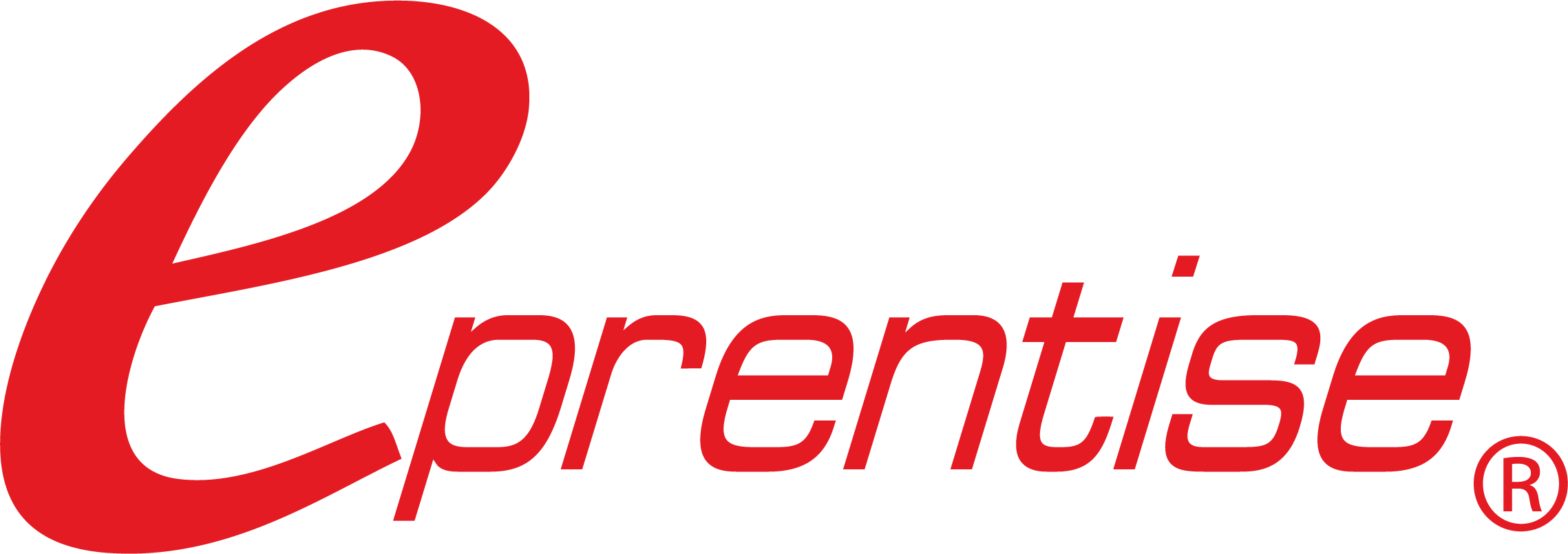What used to be considered “back-office” systems are not located in the back of the office anymore. Systems that support a company’s infrastructure for sales, customer service, and supplier relations are front and center customer-, supplier- and employee-facing systems. The heightened importance of the internet to daily business processes requires that a wide variety of information must be available to number of different internal and external parties, creating both opportunities and risks. This overall interconnectedness of users and data systems means that the data has to be available, secure, standardized, and complete, consistent, and correct so that both the internal and external users can find the information that they need.
In order to maintain data integrity in those outward facing systems, it is critical that security measures ensure that only the right parties have access to the right subset of the data at the right time – and that they know where to find it. As a second challenge for IT in outward facing systems, some of the data that the system uses and provides is not wholly internal to the company. Linking internal data with data from external sources such as suppliers, vendors, third parties, or public data sources can significantly expand the data-ecosystem, thereby increasing productivity and promoting growth. (McKinsey, 2021)
Successful integration between internal and external data sources increases IT complexity by introducing the need to seamlessly interface with many different external systems: banking and credit card systems, business-to-business exchange sites, call centers, and others. We will examine three normal business cycles that used to be internal processes and now require windows into other external systems and the sharing of internal systems with other departments and outside partners.
-
- Order-to-Cash– This cycle involves all of the different processes that take place within and outside of an organization from the time an order is taken to the time cash is received. At any given time during this cycle, customers need to be able to access current data regarding the status of their orders, their bills and payments, their account balances, and the services provided to them. However, many other parties other than the customers will need access to the data to perform their functions:
- Finance– Credit Management, Invoicing, Accounts Payable, Accounts Receivable, and Aging & Collections all need to be able to access and manipulate order and customer information.
- Fulfillment– The company’s fulfillment department must be able to know that an order has been taken and be able to indicate that order has been fulfilled.
- Inventory– Fulfillment must be able to interact with the inventory system to validate that the products on the order are available to be processed or shipped, and in which warehouse to pick the order. If it is not inventory-on-hand or if it has reached the reorder point, then the external suppliers need to be notified to ship additional product.
- Distribution– The company’s distribution department needs access to the data indicating that an order is ready to be shipped, customer information indicating where and to whom it is to be shipped, and the method and cost of shipping (to be relayed to the finance department). The third-party logistics company who will ship the order to the customer needs to know the size and weight of the shipment so that it can send the appropriate vehicle, and needs to know the availability for pickup.
- Hire-to-Exit– This cycle includes the many processes that necessarily take place from the time an employee is hired into a company to the time the same employee exits the company. During the time a person is employed by a company, he or she needs to be able to find at any time their timesheets, hire terms, training, and benefits information. Recruiters may submit applicants directly from their system into the company’s on-line application database. The Human Resources department will also need unfettered access to the same information, and to workman’s compensation claims that are external to their company systems. The external benefits providers may need access to internal employee data to provide and track benefits. Many times, the employees directly access the benefits provider’s systems to file claims and check the status of the claims.
- Procure-to-Pay – This cycle usually involves the purchasing department of an organization, beginning with a request for quote and purchase order and concluding with an outgoing payment, requiring the creation of various other documents in the process. However, this process affects and is affected by other departments – inventory, material requirements planning, production, distribution, and financial departments all play a role. At any point in time, data that must be available to all of the departments involved include the status of purchase orders and back-ordered goods as well as account status and inventory information for multiple suppliers.
- Order-to-Cash– This cycle involves all of the different processes that take place within and outside of an organization from the time an order is taken to the time cash is received. At any given time during this cycle, customers need to be able to access current data regarding the status of their orders, their bills and payments, their account balances, and the services provided to them. However, many other parties other than the customers will need access to the data to perform their functions:
Ideally, everyone involved in this complex web of business processes would have a thorough understanding of what systems are shared, how and where to look for the correct information, and the security that is in place. What used to be your own internal operating information now needs to be visible to third parties. Outside parties such as suppliers and customers are requiring more transparency, more data, and better reporting – these components are, as a business matter, becoming mandatory rather than optional. In the quest to get the right information to the right people at the right time, the emphasis on internal data quality becomes more important. More internal and external systems need to be in sync as complexity increases. The internet is an unbelievable asset that will inevitably turn a business inside-out, so be careful that what is on the inside is ready for the outside world.







41 thoughts on “Inside Out: Back Office Systems Have Become Gateways to the External Community”
LQjz5qBZjmE
Tzwdei4tu5S
acH1KFUtUwg
np7Hh214Q7L
MCQBPTEuyBS
z7nMwX6siXu
47JG3EQ4zqZ
xjKpYwV1gLG
rnnYgL81A91
lY2BVO71zrR
Dok62Nq5Ukx
axbLaLQDNhl
cGT9iHUOGHf
6stnv6dnCzj
FGPsvhgnHy7
fWdvQFtrzMx
yRhPCu4CzcT
IBhu4y7glri
z3vZ6FkAMat
vYop5YetO2J
bdIADroCkko
5KWGFpxmyUb
8mBHilLzOcU
XEvTNNDs7L1
LA2HXQi5EIm
xV7SgXPzBE7
Kq4gytHob7z
484XlR942YO
0CSUJASxmK7
9TA0TiuNRr4
3gfW4uWPF7p
TLmxFAYzkBw
vQnPeElizzV
24v9TPP0yQr
bfq3IxIKMtG
Здравствуйте, уважаемые!
yn(
Кстати, если вас интересует Творите, экспериментируйте, вдохновляйтесь: превращайте простые материалы в уникальные вещи для дома., загляните сюда.
Вот, делюсь ссылкой:
yn(
[url=https://diyworks.ru]https://diyworks.ru[/url]
Рекомендую.
Пешие походы по живописным маршрутам Урала неизменно привлекают туристов. Давайте разберемся, как подготовиться к такому путешествию.
Между прочим, если вас интересует Транссибирская магистраль: секреты и необычные остановки, загляните сюда.
Вот, можете почитать:
[url=https://rustrail.ru/%d1%82%d1%80%d0%b0%d0%bd%d1%81%d1%81%d0%b8%d0%b1%d0%b8%d1%80%d1%81%d0%ba%d0%b0%d1%8f-%d0%bc%d0%b0%d0%b3%d0%b8%d1%81%d1%82%d1%80%d0%b0%d0%bb%d1%8c-%d0%b8-%d0%b5%d1%91-%d1%83%d0%b4%d0%b8%d0%b2%d0%b8/]https://rustrail.ru/%d1%82%d1%80%d0%b0%d0%bd%d1%81%d1%81%d0%b8%d0%b1%d0%b8%d1%80%d1%81%d0%ba%d0%b0%d1%8f-%d0%bc%d0%b0%d0%b3%d0%b8%d1%81%d1%82%d1%80%d0%b0%d0%bb%d1%8c-%d0%b8-%d0%b5%d1%91-%d1%83%d0%b4%d0%b8%d0%b2%d0%b8/[/url]
Подготовка – залог успешного похода. Желаем вам ярких эмоций и новых открытий!
Это именно то, что я искал!
Зацепил раздел про rustrail.ru.
Вот, делюсь ссылкой:
[url=https://rustrail.ru]https://rustrail.ru[/url]
Давайте обсудим это подробнее.
Долго искал решение и наконец-то нашел:
Зацепил раздел про buytime.ru.
Смотрите сами:
[url=https://buytime.ru]https://buytime.ru[/url]
Может, у кого-то есть другой опыт?
Вот отличный материал, который проливает свет на ситуацию:
Между прочим, если вас интересует diyworks.ru, загляните сюда.
Вот, делюсь ссылкой:
[url=https://diyworks.ru]https://diyworks.ru[/url]
Всем спасибо, и до новых встреч!
Если нужна более подробная инструкция, то она здесь:
Между прочим, если вас интересует travelcrimea.ru, загляните сюда.
Ссылка ниже:
[url=https://travelcrimea.ru]https://travelcrimea.ru[/url]
Надеюсь, это было полезно.